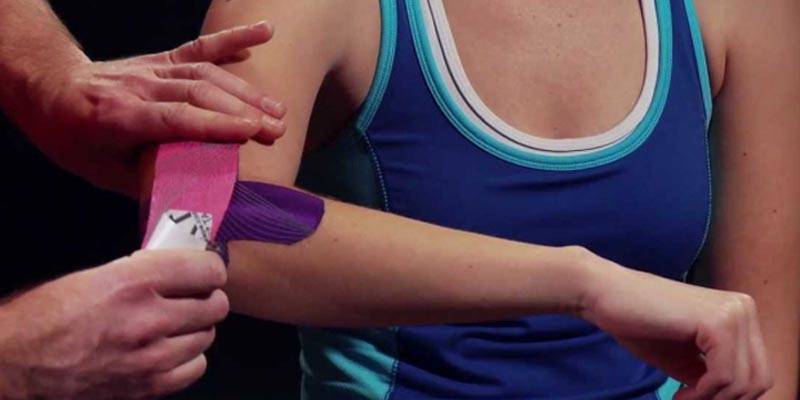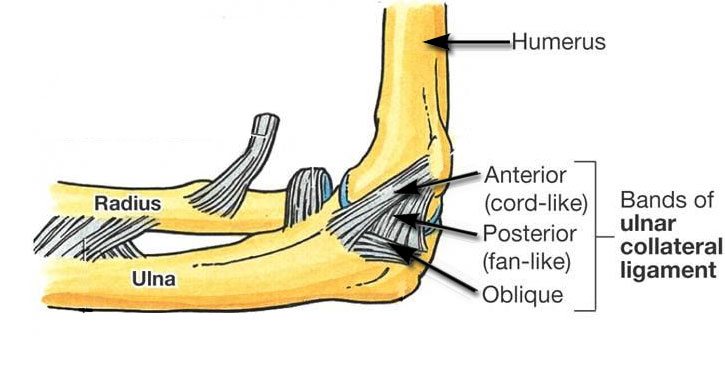nalco group
bone, muscle & joint pain physio
BOOK NOW / WHATSAPP ABOUT YOUR PAIN OR INJURY
- NOVENA 10 Sinaran Drive, Novena Medical Center #10-09, Singapore 307506
- TAMPINES 9 Tampines Grande #01-20 Singapore 528735
- SERANGOON 265 Serangoon Central Drive #04-269 Singapore 550265
Home > Blog > Physiotherapy & Hand Therapy > Conditions > Elbow Pain > Elbow Ulnar Collateral Ligament Injury Physiotherapy
Elbow Ulnar Collateral Ligament Injury Physiotherapy

Elbow ulnar collateral ligament (UCL) injuries generally occur when repetitive stress accumulates and damages the inside of the elbow, and this can and will compromise elbow stability.
Elbow UCL injuries are most common in athletes who play "overhead" sports, such as volleyball and baseball, which require using the arms in an overhead position. These injuries are occurring in greater frequency with the rise of sport specialization.
They are often referred to as "Tommy John" injuries, named after the famous baseball pitcher who underwent the first surgery for a UCL injury in 1974.
Our senior physiotherapists and senior hand therapists can help improve
- your arm's strength and range of motion
- your body's overall stability and balance following a UCL injury
What Are Ulnar Collateral Ligament Injuries?
The elbow ulnar collateral ligament is a band of tissue that connects the inside of your upper arm (humerus) to the inside of your forearm (ulna). What this ligament does is that it functions to support and stabilize your arm when you perform a motion, such as throwing a ball.
An elbow UCL injury may at first cause pain and tightness in the area.
But, over time and with repetitive stress or trauma, our elbow's UCL will slowly become stretched and even tear.
Good news is that invasive surgery is not always necessary to heal a UCL injury, but it may be performed if pain persists or the elbow feels unstable upon a return to sport or other activities.

Signs and Symptoms
With an elbow ulnar collateral ligament injury, patients may experience:
- Soreness or tightness along the inside of your elbow
- Minor swelling and possible bruising along the inside of your arm
- Possible numbness and tingling in your arm
- Instability at your elbow joint (a feeling like your elbow might “give out” when you move it through certain motions)
- Pain when using your arm in an overhead position (eg, throwing/pitching a ball, swinging a racquet)
- Difficulty warming up for a sport, or needing a longer time to warm up
- Poorer performance (eg, a decrease in pitching speed)
How Is It Diagnosed?
Our senior hand therapists and/or senior physiotherapists will conduct a thorough evaluation that includes taking your health and activity history.
We may ask you questions including:
- When and how did this injury occur?
- Was it sudden or gradual/over period of time?
- How long have you had pain?
- Have you had any numbness and tingling in your arm?
- Did you feel or hear a "pop" near your elbow when throwing or performing an overhead activity?
- Have you experienced any instability (eg, a feeling of your arm “giving out”) when performing an overhead activity?
- Have you experienced a decrease in job or sport performance?
- What other sports or activities do you participate in?
- Have you had to stop playing your sport, or performing your job, because of the injury to your elbow?
We may gently touch the area around your elbow joint to locate the specific area of pain. We may slightly bend your arm while applying pressure along the outside of your elbow joint, or ask you to mimic a throwing motion as the therapist resists against it.
To provide a definitive diagnosis, we may collaborate with an orthopedic surgeon. The surgeon may order further tests, such as magnetic resonance imaging (MRI) or magnetic resonance arthrogram (MRA), to confirm the diagnosis and to rule out other possible damage.
how our senior hand therapists and/or senior physiotherapists can help you
We can help improve your arm's strength and range of motion following your elbow ulnar collateral ligament injury, as well as help restore
- your shoulder
- core stability
- coordination
- balance
We also will work with you before and after any necessary surgery, and can help identify other issues that may have contributed to your injury, such as range of motion and strength deficits, or improper throwing mechanics.
We will help you:
Boost your healing process
Decreasing stress across the injured area is the best way to promote healing of a UCL injury.
We will likely tell you to take some time off from your sport or other activity. We may educate you on the RICE (rest, ice, compression, elevation) principle and may implement "cross-friction massage" to help the body supply nutrients to the injured ligament.

We may employ the following to improve and accelerate soft tissue healing:
- cold therapy
- heat therapy
- ultrasound therapy
- radio-frequency Indiba physiotherapy
- manual therapy
- stretching exercises
- etc
Strengthen your muscles
After your injury your arm may feel weaker.
Strengthening the muscles of your shoulder, upper back, and shoulder blades in addition to those of the forearm will help decrease the stress at the elbow joint.
Addressing lower-body balance or any weakness through your hips and trunk also may help decrease stress across your elbow.
Improve your range of motion
After your injury you may notice more difficulty straightening or bending your arm.
We will work with you to improve your arm's range of motion, including possibly stretching your shoulder to help decrease stress on your elbow when performing overhead movements.
Correct your movements
While every sport requires different arm positions, certain positions may put an athlete at greater risk for injury to the elbow.
Examining and modifying the movements you perform may help you safely return to your sport. We will help design a specific program to allow a gradual full return to activity.
Prepare to return to sport
An important component of preparing for a return to sports after an elbow ulnar collateral ligament injury is preparing the arm to properly withstand the stress placed on it during throwing or other overhead motions.
We will work with you to establish and implement a progressive program to prepare you for a return to practice and competition.
If Surgery Is Required
If corrective elbow surgery is required, our senior hand therapists and/or senior physiotherapists may measure your arm strength and range of motion prior to surgery to define a baseline goal to achieve following the procedure.
Immediately following surgery, your arm will likely be placed in a splint, brace, or sling to protect your elbow. Elbow physical therapy will begin within the first week to 10 days following surgery.
We will:
- Provide appropriate guidance. You will receive an individualized treatment program of gradual rehabilitation that will ensure you heal in the safest and most effective way possible.
- Protect the graft/repair site in the early postoperative period. You will be provided a brace that will likely need to be worn for 5 to 6 weeks, depending on your surgeon’s preference. Our senior hand therapists and/or senior physiotherapists will show you how to ensure you don’t bend your arm too much or rotate your shoulder too far during this time.
- Improve how far you can move your shoulder and elbow. When you are ready, we will help you gently bend and straighten your arm through different exercises and stretching techniques. We also will gently stretch your shoulder to help decrease stress across the elbow.
- Improve the strength of your arm. Through a series of exercises, we will work with you to improve your arm strength. Your hand grip and forearm strength will likely be the first things you will work on following surgery. As you progress, the exercises will begin to focus more on your shoulder blade and upper back muscles.
- Improve muscle strength and coordination. As you begin to heal and progress, your exercises will become more specific to your sport or other activity.
Resuming sport-specific activities
An athlete who has experienced a UCL injury can begin to return to throwing at approximately 6 months after surgery. The return is based on the surgeon and our senior hand therapists and/or senior physiotherapists providing clearance to do so.
Returning to full competition
An athlete generally can be cleared to return to game competition approximately 12 to 14 months after surgery.
